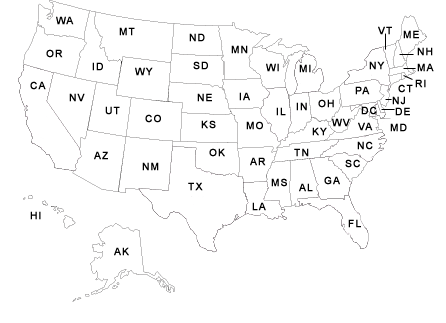American Indian/Alaska Native Profile

|
|
Overview (Demographics): This racial group includes people having origins in any of the original peoples of North, South America, and Central America, who maintain tribal affiliation or community attachment. As of 2011, there were an estimated 6.2 million people who were classified as American Indian and Alaska Native alone or American Indian and Alaska Native in combination with one or more other races. This racial group comprises 2 percent of the total U.S. population.
22 percent of American Indians and Alaska Natives live on reservations or other trust lands. 60 percent of American Indians and Alaska Natives live in metropolitan areas; this is the lowest metropolitan percentage of any racial group. 1.5 million American Indian and Alaska Natives are under the age of 18, which comprises 31% of this racial group.
Currently, there are 566 federally recognized (AI/AN) tribes, and more than 100 state recognized tribes. There are also tribes that are not state or federally recognized. Federally recognized tribes are provided health and educational assistance through a government agency called Indian Health Service (IHS), U.S. Department of Health and Human Services. The IHS operates a comprehensive health service delivery system for approximately 2 million American Indians and Alaska Natives. The majority of those who receive IHS services live mainly on reservations and in rural communities in 36 states, mostly in the western United States and Alaska. 36 percent of the IHS service area population resides in non-Indian areas, and 600,000 are served in urban clinics. Typically, this urban clientele has less accessibility to hospitals; health clinics or contract health services implanted by the IHS and tribal health programs. Studies on the urban American Indian and Alaska Native population have documented a frequency of poor health and limited health care options for this group.
Since 1972, IHS has embarked upon a series of initiatives to fund health-related activities in off-reservation settings, which will make health care services accessible to urban American Indians and Alaska Natives. Currently, the IHS funds 33 urban Indian health organizations, which operate at sites located in cites throughout the United States. Approximately 600,000 American Indians and Alaska Natives are eligible to utilize this program. The thirty-three programs administer: medical services, dental services, community services, alcohol and drug abuse prevention, education and treatment, AIDS and sexually transmitted disease education and prevention services, mental health services, nutrition education and counseling services, pharmacy services, health education, optometry services, social services, and home health care.
For more information about tribal health issues:
Indian Health Service
National Indian Health Board 
Urban Indian Health Institute 
Language Fluency: In 2010, almost 28 percent of American Indians/Alaska Natives spoke a language other than English at home.
Educational Attainment: In 2010, 77 percent of American Indians and Alaska Natives alone, age 25 and over have at least a high school diploma, as compared to 91 percent of non-Hispanic Whites. 13 percent of American Indians and Alaska Natives age 25 and over have at least a bachelor's degree, in comparison to 31 percent of non-Hispanic Whites. 4.5 percent of American Indians and Alaska Natives have at least an advanced graduate degree (i.e., master's, Ph.D., medical, or law).
Economics: The median family income for American Indian and Alaska Natives is $39,664, as compared to $67,892 for non-Hispanic Whites. 26 percent of American Indians and Alaska Natives age 16 and over work in management and professional occupations, in comparison to 40 percent of Whites. Also, 28 percent of this racial group lives at the poverty level, as compared to 10.6 percent of non-Hispanic Whites, in 2010.
Insurance Coverage: In 2010, 41 percent of American Indians and Alaska Natives had private health insurance coverage. 36.7 percent of AI/ANs relied on Medicaid coverage. 29.2 percent of AI/ANs had no health insurance coverage in 2010.
Full Census Reports:
The American Indian and Alaska Native Population: 2010 [PDF | 2.9MB]
The American Community Survey - American Indians and Alaska Natives: 2004 [PDF | 3.5MB]
We the People: American Indians and Alaska Natives in the United States, February 2006 [PDF | 755KB]
Census Bureau, 2011. Income, Poverty, and Health Insurance Coverage in the United States: 2010 [PDF | 2.3MB]
Health: It is significant to note that American Indians/Alaska Natives frequently contend with issues that prevent them from receiving quality medical care. These issues include cultural barriers, geographic isolation, inadequate sewage disposal, and low income.
Some of the leading diseases and causes of death among AI/AN are heart disease, cancer, unintentional injuries (accidents), diabetes, and stroke. American Indians/Alaska Natives also have a high prevalence and risk factors for mental health and suicide, obesity, substance abuse, sudden infant death syndrome (SIDS), teenage pregnancy, liver disease, and hepatitis.
Other Health Concerns: American Indians and Alaska Natives have an infant death rate 60 percent higher than the rate for Caucasians. AI/ANs are twice as likely to have diabetes as Caucasians. An example is the Pima of Arizona, who have one of the highest diabetes rates in the world. AI/ANs also have disproportionately high death rates from unintentional injuries and suicide. In 2010, the tuberculosis rate for AI/NAs was 5.8, as compared to 2.0 for the White population.
Quick Facts - See the following links for detailed statistics on specific health conditions.
All Topics A-Z
Cancer
Diabetes
Heart Disease
HIV/AIDS
Immunization
Infant Mortality
Stroke
You will need Adobe Acrobat® Reader™ to view PDF files located on this site. If you do not already have Adobe Acrobat® Reader™, you can download here for free.





 FYI ...
FYI ... Keep Informed!
Keep Informed! Need Help?
Need Help?